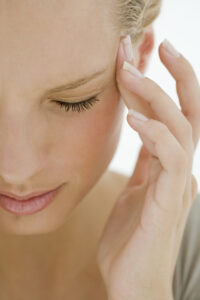Acupuncture and Migraine: Combined with Beanembedding on Migraine and HRV
Kristen Sparrow • November 17, 2024


Nice study looking at acupuncture alone compared to acupuncture plus beanembedding. The beanembedding helped. Though there is supposed to be a free article, I can’t find it. Beanembedding is using of seeds instead of press needles in the ears. Of course, we’ve discussed migraine with acupuncture repeatedly on the blog!
Abstract
Objective: To analyze the effects of acupuncture combined with auricular bean embedding on autonomic nervous dysfunction, heart rate variability and psychological state of migraine patients.
Method: Sixty migraine patients admitted to our hospital from August 2022 to June 2023 were selected for this retrospective study. Based on their treatment protocols, the patients were divided into the acupuncture alone group (control group) and acupuncture combined with auricular bean embedding group (observation group), with 30 cases in each group. The clinical effects in the two groups were compared. The heart rate variability (low-frequency power, high-frequency power, standard deviation of all normal sinus intervals) of patients between the two groups after treatment was compared. The SF-McGill Pain Questionnaire (SF-MPQ) scores were compared between the two groups before and after treatment, as were psychological scores using the Hamilton Anxiety Scale (HAM-A) and quality of life (QOL) scores. The autonomic nervous dysfunction was also compared between the two groups before and after treatment.
Results: The observation group showed superior clinical efficacy compared to the control group (χ2=8.161, P=0.043). Clinical features scale (CFS) scores significantly decreased in both groups post-treatment, with greater reduction in the observation group (t=4.283, P < 0.001). Heart rate variability parameters also showed significant improvements in the observation group, including increases in both low-frequency power and high-frequency power (t=2.010, P=0.049; t=2.111, P=0.039 respectively) and standard deviation of sinus intervals (t=2.435, P=0.018). Post-treatment SF-MPQ scores were significantly lower in the observation group compared to the control group (t=17.709, P < 0.001), indicating reduced pain. Anxiety levels, as measured by HAM-A scores, decreased more significantly in the observation group compared to the control group (t=3.429, P=0.001). Both groups showed significant improvements in quality of life, with the observation group saw more substantial effects (t=7.235, P < 0.001).
Conclusion: Acupuncture combined with auricular bean embedding effectively improves autonomic nervous dysfunction, enhances the activity of the autonomic nervous system, including both sympathetic and parasympathetic nerves, restores autonomic nerve balance, and relieves clinical symptoms of migraine patients. It also demonstrates significant therapeutic efficacy and holds substantial value in clinical application and warrants promotion.
Keywords: Acupuncture; autonomic nervous system function; ear point burying beans; heart rate variability; migraine headache.

